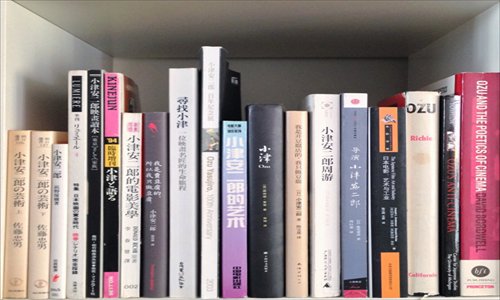The taste of plainness

Film critic Shu Ming has written several books on the films of Yasujiro Ozu. Photo: Courtesy of Shu Ming
Yasujiro Ozu, a Japanese director of the early 20th century, is widely regarded as one of the most influential figures in film history. To commemorate the 110th anniversary of his birthday and the 50th anniversary of the master's death, Ozu's studio, the Shochiku Company, utilized cutting-edge digital technology to repair four of his color films: Equinox Flower (1958), Good Morning (1959), Late Autumn (1960) and An Autumn Afternoon (1962).
Several of those restored films were screened worldwide this year at important film festivals: Cannes, Venice and Berlin. Here in Beijing, the Ullens Center of Contemporary Art (UCCA) in the 798 Art Zone is currently hosting "A Retrospective of Yasujiro Ozu," a series of screenings and talks that has proved remarkably popular. "All the tickets sold out before the event," a UCCA employee told Metropolitan.
"Ozu produced 54 films in his lifetime, of which 35 have survived" said Shu Ming, a veteran film commentator and expert on Japanese films. "His themes are the style and pacing of day-to-day life, including loneliness, family, dependence, marriage, parents and kids. He used long-take technique to express the plainness and profundity of bourgeois life."
"During the Second World War, Japanese government policies compelled many directors to make war-themed political films, yet Ozu persisted in featuring family relationships," Shu said. "Even so, he was renowned in his time for successfully reflecting the social milieu. For example, in Equinox Flower, his first color film, Ozu expressed his sympathy with the younger generation by depicting an old-fashioned father and his newfangled daughter."
For decades, his character-driven dramas have impressed cinema buffs. "Most Chinese movies are commercialized, homogeneous and can be seen as kitsch, while Ozu's films can remind viewers of other possibilities and styles of movies," said Liu Haibo, another film critic. "Ozu gave up exaggerating forms to depict the world he had observed."
As part of the retrospective at UCCA, Shu was invited to give a lecture about Ozu's cinematic art. He played the final scene of Early Spring (1956), in which a father returns home after attending his daughter's wedding ceremony. The viewers see the father taking off his coat and hat, walking slowly to the corridor and beginning to peel an apple without saying a word. "Then we see an image of the tides of the ocean, with the words 'The End,'" said Shu. "Ozu implies several kinds of interpretations for the audiences. The tide might mean the change in the family, or the father's moodiness and so on."
Sun Dazhuang, 23, a law student, first became fascinated by Ozu's work for its depictions of people spontaneously overflowing with emotion. He watched 10 of the films. "However, I gradually lost interest in Ozu's works because his films focus on the daily life of the middle-class and are too sentimental." Despite this critique, Sun had come to UCCA to watch a documentary of the director's career, I Lived, But… The Life and Works of Yasujiro Ozu (1983).
Ozu's films are still influencing filmmakers today. "I think that Hou Hsiao-Hsien, the director from Taiwan, has been influenced by Ozu," said Wen Qing, an audience member who has studied Ozu's films on her own. "For example, in Hou's Cafe Lumiere, which was released in 2003 to commemorate the 100th anniversary of Ozu's birth, it's easy to spot cinematographic techniques that are very similar to Ozu's."